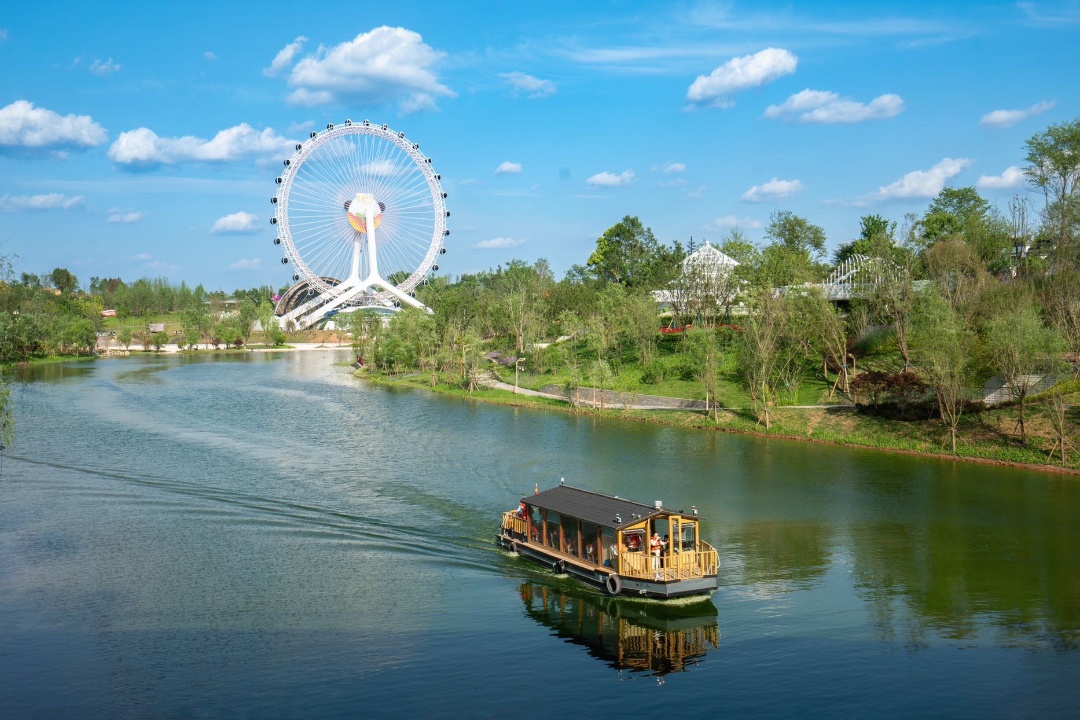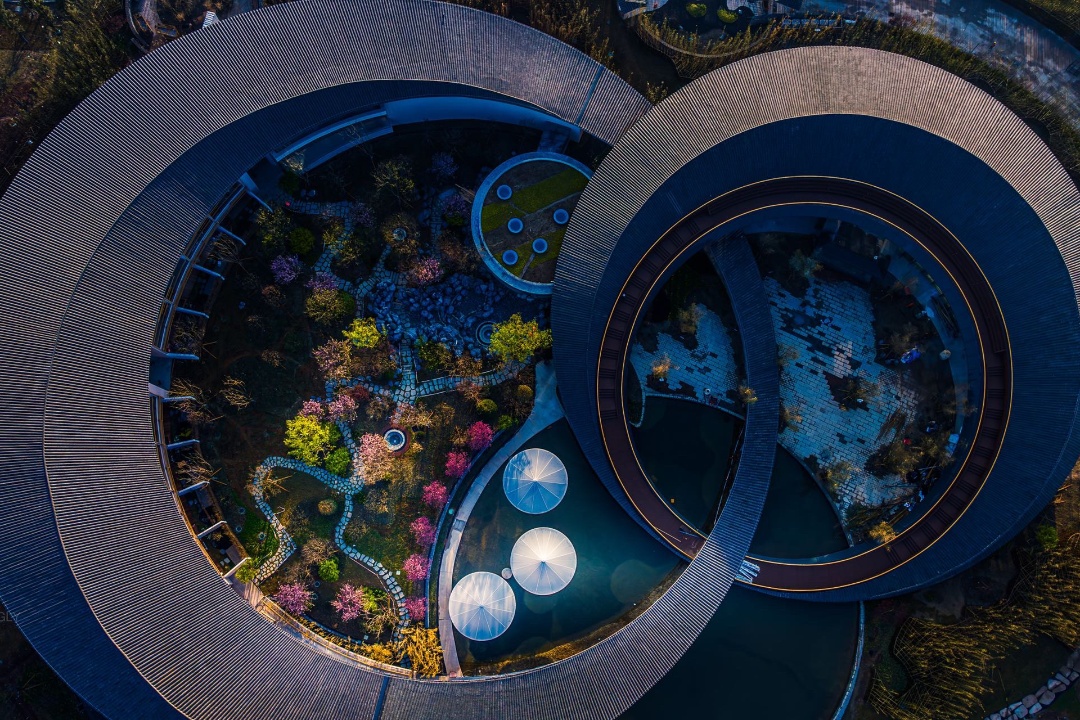At the top of Jinyun Tower, a breeze from Sancha Lake brushes against the face. Looking out at the main venue of the International Horticultural Exhibition 2024 Chengdu (the EXPO), a vast expanse of green comes into view. The core buildings and exhibition gardens, after 186 days, are shining with new vitality. From the warm spring of "flowers bloom, the EXPO shines" to the golden autumn symbolizing harvest, they have accompanied the Chengdu people for a long time, and are about to embark on a new chapter.

After the conclusion of the EXPO on October 28, the main venue of the EXPO will be renamed as the Chengdu World Horticultural Exposition Park. To be open to the public as a city park, it will apply to be a national botanical garden, and will be the venue for projects and closing events for the 2025 World Games. A series of initiatives has been planned to extend the ecological value of the EXPO, to provide a sustainable, high-quality public service space for local residents and tourists. A new cultural landmark is set sail soon in Chengdu.
Since the bid for the 2024 International Horticultural Exhibition, Chengdu has always been adhering to the concept of "being green, low-carbon and sustainable." Huang Cong, Chief planner of the main venue, noted that every building in the site will be equipped with new functions after the event, to ensure the long-term and effective use of the park and its sustainable development.
This is a piece of land full of vigor and vitality. The main venue, covering 242.2 hectares, was built based on ample natural resources including surrounding mountains, rivers and lakes. Following local natural topography and unique conditions, the EXPO organizers constructed the landscapes and planted trees. The six major buildings occupy less than 10% of the total land, with water areas of about 37.33 hectares, creating nearly 3 kilometers of ecological waterways. The public areas and exhibition gardens showcase 2,693 plant species, vividly reflecting the harmonious coexistence of man and nature.
The main venue was designed with a consideration for the "integration of garden and city." The overall layout of the EXPO grounds combines practical post-event transformation, to enhance urban functions, accommodate industrial layouts, and to provide more consumer scenarios. This aims to convert the EXPO’s ecological value into social, residential, and industrial values, making a time-limited event generate long-term benefits for the city.
The Jinyun Tower, one of the core buildings, will be transformed into the Western Sichuan Classical Garden Museum, an important window for showcasing and inheriting Sichuan’s garden culture. The main exhibition hall will be seamlessly transformed into a cultural and arts center of the Chengdu Eastern New Area, serving as a comprehensive complex for exhibitions and shows, multifunctional activities, as well as programs involving art education, to further enrich the cultural life of local citizens. To provide diverse cultural experiences for locals and visitors, 10 iconic landscape spots will be built in the main exhibition hall. They will be venues for exhibitions and shows, meetings and conferences, offices, and receptions. "From gala celebrations to various exhibitions, and from academic exchanges to calligraphy and painting competitions, the hall will be equipped with high spatial flexibility and multifunctional adaptability," said a representative from the Chengdu Garden Expo Company.
As one of the six core venues of the EXPO, the Botanical Pavilion is not only the highlight in the international horticultural exhibition area, but also plays an important role to showcase rare global plant species, promote ecological civilization and to advocate a green lifestyle. After the event, the pavilion will become a green research and sales center for VR digital exhibitions and plant research, and will also serve as a romantic location for forest-style wedding photography, offering newlyweds a unique setting for photo shooting.
There are 113 domestic and international exhibition gardens spreading across 5 distinct themed exhibition areas. Walking around the international horticultural exhibition area, people can feel the elegant vibe of French gardens, the romantic appeal of Italian gardens, and the refinement of eastern European gardens. The 39 foreign gardens are harmoniously intertwined with China’s Jiangnan, Lingnan, Northern, and Bashu gardens, producing a stunning visual masterpiece of global horticulture.
The EXPO is the exhibition with the largest number of gardens among all B-level International Horticultural Exhibitions. After this event, all the exhibition gardens will be preserved in their original forms, and the transformed Chengdu World Horticultural Exposition Park will continue, as an important part of the Park City, to write a new chapter in Chengdu's flower and horticulture industry.

After hearing that the exhibition gardens would be preserved, a visitor from Haining, Zhejiang, named Lv Xiaohua, left a message on the EXPO official website: "With a highly responsible attitude, you have preserved this valuable International Horticultural Exhibition legacy. I hope these beautiful gardens will attract more attention of the world in an even more charming form in the future."
The EXPO was not only a visual feast of flowers and horticulture but also a convergence of new technologies, new processes, new materials and new concepts in the horticultural industry. Zhejiang Cultural Landscape Co., Ltd., one of the exhibitors, carefully designed and constructed the Yun Garden, which is based on the Song Dynasty (960-1276) style, presenting a wonderful classical three-dimensional landscape painting that incorporates rich elements involving Song culture, health recovery, and modern life. "Most of the company's patented and cutting-edge technologies are showcased in the Yun Garden. It can be said that we have presented all our 'hidden gems'!" During the EXPO, visitors from China and abroad had unique experiences in the garden, including playing the Chinese zither, appreciating paintings and playing chess. In the future, these interesting scenes will be offered continuously for a long time.
Chengdu’s successful hosting of the EXPO has further demonstrated its unique charm as a demonstration area for China’s Park City initiative, presenting to the world a high-level horticultural event featuring international standards, Chinese elements, and Chengdu characteristics. And, it has injected new vitality into its urban development and promoted the growth of the green, low-carbon industry market. To preserve the public memory of the EXPO, the core functional areas of the EXPO’s main venue will continue to provide rich business and activity scenarios, to ensure the long-term use and sustainable growth of the park. Additionally, while keeping the garden-city integration, the EXPO Park will integrate surrounding resources to build a cultural tourism industrial development corridor featuring lakes, mountains and gardens.
In the late autumn, the space hibiscus in the EXPO park blooms braving the cold. The park is lush with greenery, full of vigor and vitality. Chengdu’s ecological charm and uniqueness of its cultural tourism in the Post-EXPO period will shed more light on the daily lives of the people of Chengdu.




